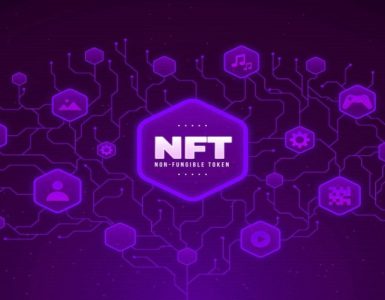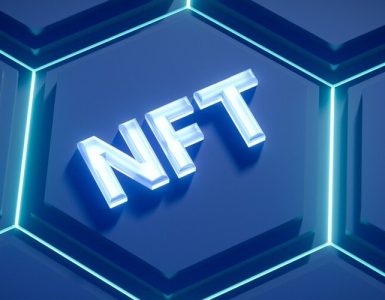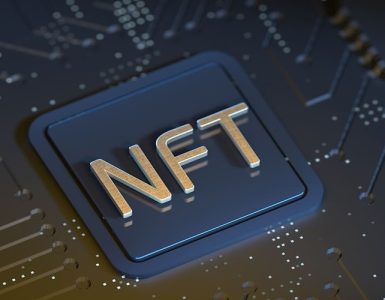Introduction
Non-Fungible Tokens (NFTs) have become increasingly popular in recent years, and are being used to represent ownership of a wide range of digital assets. One area where NFTs are showing significant potential is in virtual real estate, where they could revolutionize the way we own and trade digital property. In this article, we will explore the potential of NFTs in virtual real estate and their impact on property ownership.
What is Virtual Real Estate?
Virtual real estate refers to digital spaces that can be owned and developed in the same way as physical real estate. This can include virtual worlds, online gaming environments, and social media platforms. Virtual real estate can be used for a range of purposes, from gaming and entertainment to virtual events and business operations.
The Rise of Virtual Real Estate
Virtual real estate has been growing in popularity in recent years, as advances in technology have made it possible to create more immersive and engaging digital spaces. This has led to the creation of virtual worlds such as Second Life and Decentraland, which allow users to buy, sell, and develop virtual real estate. In addition, social media platforms such as Facebook and Twitter are also exploring the potential of virtual real estate as a way to create more engaging and interactive online experiences.
NFTs and Virtual Real Estate
NFTs offer significant potential for the tokenization of virtual real estate. By creating an NFT that represents ownership of a virtual property, users can buy, sell, and trade digital assets in the same way as physical real estate. This could provide benefits such as increased liquidity, transparency, and fractional ownership of virtual real estate.
NFTs and Decentraland
Decentraland is a virtual world that allows users to buy, sell, and develop virtual real estate using the Ethereum blockchain. Decentraland has its own cryptocurrency, called MANA, which is used to buy and sell virtual land. In addition, Decentraland also allows users to create and trade NFTs that represent ownership of virtual real estate. This has led to a thriving virtual real estate market, with some virtual properties selling for tens of thousands of dollars.
Benefits of NFTs in Virtual Real Estate
There are several benefits to using NFTs in virtual real estate, including:
- Increased liquidity: NFTs can be easily traded and sold on blockchain marketplaces, providing increased liquidity for virtual real estate assets.
- Fractional ownership: NFTs can be divided into smaller fractions, allowing multiple owners to invest in a single virtual property.
- Transparency: The use of blockchain technology provides a transparent and verifiable record of ownership for virtual real estate assets.
- Enhanced user experience: NFTs can provide a more engaging and interactive user experience, allowing users to develop and customize their virtual properties in new and innovative ways.
Challenges and Limitations
While NFTs offer many benefits for virtual real estate, there are also challenges and limitations to consider. Some of these include:
- Legal and regulatory issues: The legal and regulatory framework for NFTs and virtual real estate is still developing, creating uncertainty and potential risk for users.
- Scalability: The current blockchain technology used for NFTs is not yet scalable enough to handle large-scale transactions, which could limit the potential for widespread adoption.
- Environmental concerns: The energy consumption required for blockchain transactions, including NFTs, has raised concerns about the environmental impact of the technology.
Future Developments in NFTs and Virtual Real Estate
The potential of NFTs in virtual real estate is still in its early stages, but there are several future developments that could drive growth in this area.
- Integration with DeFi protocols: NFTs could be integrated with decentralized finance (DeFi) protocols to provide new ways of financing virtual real estate. This could include fractional ownership, lending, and borrowing using NFTs as collateral.
- Standardization: The development of industry standards for NFTs and virtual real estate could help to increase transparency and reduce risk for users.
- Interoperability: The ability of NFTs to interact with other blockchain technologies, such as smart contracts, could open up new possibilities for virtual real estate, such as automated rent payments and other property management functions.
- Tokenization of physical assets: NFTs could be used to represent ownership of physical assets that are connected to virtual real estate. For example, an NFT could represent ownership of a piece of artwork that is displayed in a virtual property.
The Future of Property Ownership
The use of NFTs in virtual real estate represents a significant shift in the way we think about property ownership. While virtual real estate may not have the same tangible value as physical real estate, it offers many of the same benefits, such as investment potential and the ability to generate income. NFTs provide a secure and transparent way of representing ownership of virtual assets, which could help to unlock the potential of virtual real estate as a new asset class.
In addition to virtual real estate, NFTs could also be used to represent ownership of other digital assets, such as artwork, music, and collectibles. As the technology behind NFTs continues to evolve, we can expect to see new applications and use cases for these tokens in a wide range of industries.
Challenges and Limitations of NFTs in Virtual Real Estate
While the use of NFTs in virtual real estate has significant potential, there are also challenges and limitations to consider.
- Limited market: The market for virtual real estate is currently limited, and there is a lack of established platforms for buying and selling these assets. This could limit the liquidity and value of NFTs in virtual real estate.
- Technical barriers: The technical requirements for creating and trading NFTs can be challenging for non-technical users. This could limit the accessibility of NFTs in virtual real estate for some investors and property owners.
- Security concerns: While blockchain technology is secure, there are still risks associated with storing and trading virtual assets. Hackers and other bad actors could potentially compromise NFTs and virtual real estate platforms, leading to loss of funds and other damages.
- Regulatory challenges: The regulatory environment for NFTs and virtual real estate is still developing, and there is uncertainty around how these assets will be treated under existing laws and regulations.
- Environmental impact: The energy consumption associated with blockchain technology has been a topic of concern, particularly as the use of NFTs and other blockchain applications grows. As virtual real estate becomes more popular, it will be important to consider the environmental impact of these transactions.
Despite these challenges, the potential benefits of NFTs in virtual real estate are significant, and we can expect to see continued growth and development in this area in the coming years.
Conclusion
The use of NFTs in virtual real estate is a promising application of blockchain technology, providing a secure and transparent way of representing ownership of virtual assets. While there are challenges and limitations to consider, the potential benefits of NFTs in virtual real estate are significant, and we can expect to see continued growth and development in this area in the coming years. As the market for virtual real estate expands and new technologies are developed, the use of NFTs could revolutionize the way we think about property ownership and investment.





